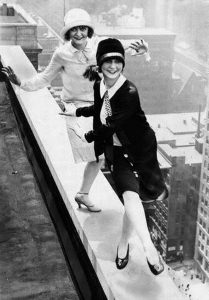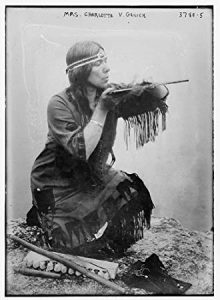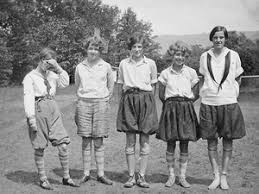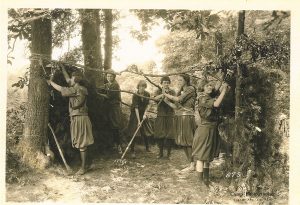
Camps for girls began in 1902, according to the American Camping Association, with about 100 camps; by 1916, there were over one thousand. “Popular culture and adult critics depicted the modern girl—referred to regularly as a flapper by the 1920s—as disregarding the roles of “dutiful daughter, wife and mother” in favor of romantic love, consumer goods, frivolity, and “sexual, economic or political emancipation.” (Weinberg)
Back to nature enthusiasts held that women were more rooted in nature than men based on the historical women’s reproductive roles in societies. The Indian imagery in camps were directly related to the perception of a native women’s association with nature. (Schrepfee 156) Camping organizations pressed for girl’s physical health and other competencies, yet they inferred these activities were intentionally for providing a good foundation for family relations, healthy moral values, responsibility, and later, marriage.
The Campfire Girls was one of the earliest girls’ organizations founded by Charlotte and Luther Gulick. Gulick’s program incorporated feminine Indian imagery to inculcate beauty, service, domesticity, and health—elements they believed critical to carry forward as part of modern American girls’ identity (Helgren.334).


Girls camps promoted self- assurance, group dynamics – and rugged play on par with the boy’s camps. Often, there were conflicting opinions on what girls were allowed to do at camp. A girl was expected to be adventurous but not too adventurous. Laura Mattoon at Camp Keonka, NH created the first scandalous bifurcated skirt for girl campers.

Girls were expected to be prepared to develop physically and connect with nature and presumably, their natural role in society. Unlike camps that promoted the Indian Maiden ideals, Girl Scouts advanced the notion that “back to nature for girls was experienced by assuming the can-do attitude of the pioneer ancestors.” (Miller 5-6)